Mosloflavone
Modify Date: 2024-01-02 20:31:48
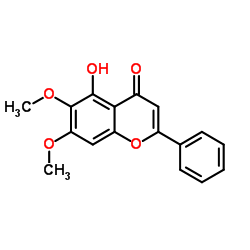
Mosloflavone structure
|
Common Name | Mosloflavone | ||
|---|---|---|---|---|
| CAS Number | 740-33-0 | Molecular Weight | 298.290 | |
| Density | 1.3±0.1 g/cm3 | Boiling Point | 508.5±50.0 °C at 760 mmHg | |
| Molecular Formula | C17H14O5 | Melting Point | 163-164ºC (chloroform , acetone ) | |
| MSDS | N/A | Flash Point | 190.5±23.6 °C | |
Use of MosloflavoneMosloflavone is a flavonoid isolated from Scutellaria baicalensis Georgi with anti-EV71 activity. Mosloflavone inhibits VP2 virus replication and protein expression during the initial stage of virus infection and inhibits viral VP2 capsid protein synthesis. Mosloflavone is a promising biocide and inhibits P. aeruginosa virulence and biofilm formation. |
| Name | 5-Hydroxy-6,7-dimethoxy-2-phenyl-4H-chromen-4-one |
|---|---|
| Synonym | More Synonyms |
| Description | Mosloflavone is a flavonoid isolated from Scutellaria baicalensis Georgi with anti-EV71 activity. Mosloflavone inhibits VP2 virus replication and protein expression during the initial stage of virus infection and inhibits viral VP2 capsid protein synthesis. Mosloflavone is a promising biocide and inhibits P. aeruginosa virulence and biofilm formation. |
|---|---|
| Related Catalog | |
| Target |
IC50: EV71; bacterial[1][2] |
| In Vitro | Mosloflavone shows promising anti-inflammatory activity via inhibition of TNF-α and IL-1β with IC50 values of 16.4 uM and 6.4 uM, respectively; inhibits TNF-α, IL-1β and iNOS levels in the supernatant of mouse macrophage cell line J774A as a dose-dependent manner, it also can be used as a starting point to discover lead structures for treatment of inflammatory and immunomodulatory diseases[2]. |
| References |
| Density | 1.3±0.1 g/cm3 |
|---|---|
| Boiling Point | 508.5±50.0 °C at 760 mmHg |
| Melting Point | 163-164ºC (chloroform , acetone ) |
| Molecular Formula | C17H14O5 |
| Molecular Weight | 298.290 |
| Flash Point | 190.5±23.6 °C |
| Exact Mass | 298.084137 |
| PSA | 68.90000 |
| LogP | 2.74 |
| Vapour Pressure | 0.0±1.4 mmHg at 25°C |
| Index of Refraction | 1.622 |
| HS Code | 2914509090 |
|---|
| Precursor 9 | |
|---|---|
| DownStream 3 | |
| HS Code | 2914509090 |
|---|---|
| Summary | HS:2914509090 other ketones with other oxygen function VAT:17.0% Tax rebate rate:9.0% Supervision conditions:none MFN tariff:5.5% General tariff:30.0% |
| 5-hydroxy-6,7-dimethoxy-2-phenylchromen-4-one |
| 5-Hydroxy-6,7-dimethoxy-2-phenyl-4H-chromen-4-one |
| baicalein 6,7-dimethyl ether |
| 4H-1-Benzopyran-4-one, 5-hydroxy-6,7-dimethoxy-2-phenyl- |
| Mosloflavone |
| 5-hydroxy-6,7-dimethoxyflavone |
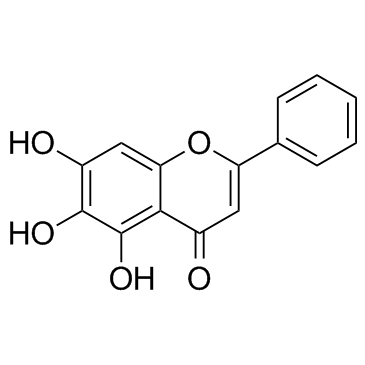 CAS#:491-67-8
CAS#:491-67-8 CAS#:18107-18-1
CAS#:18107-18-1 CAS#:973-67-1
CAS#:973-67-1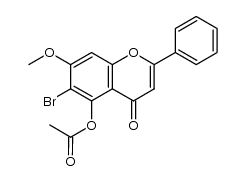 CAS#:1215208-44-8
CAS#:1215208-44-8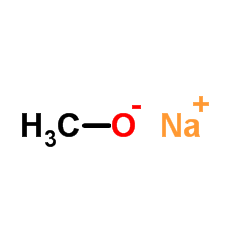 CAS#:124-41-4
CAS#:124-41-4 CAS#:74-88-4
CAS#:74-88-4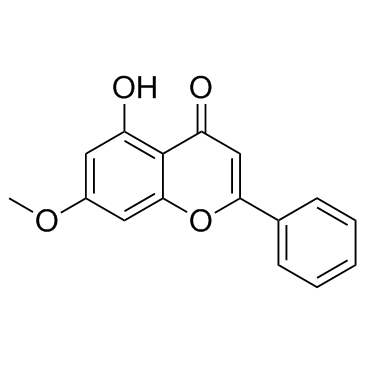 CAS#:520-28-5
CAS#:520-28-5 CAS#:480-11-5
CAS#:480-11-5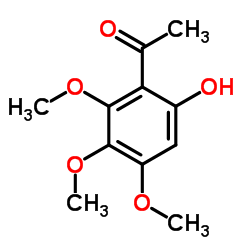 CAS#:22248-14-2
CAS#:22248-14-2 CAS#:29550-13-8
CAS#:29550-13-8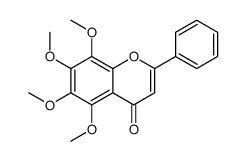 CAS#:3162-43-4
CAS#:3162-43-4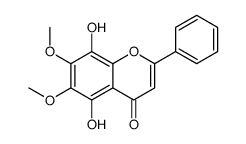 CAS#:73202-52-5
CAS#:73202-52-5
